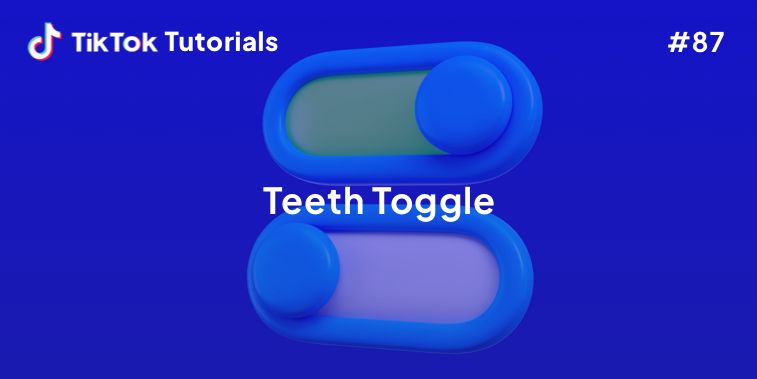Learn with us how to create a SVG text using Stroke Offset Method in CSS!
If you found us on TikTok on the following post, check out this article and copy-paste the full code!
Happy coding! 😻
@creative.tim Don’t forget to check out Tutorial #40 on our blog for the full code🤓 link in bio #webdev #cssprojects #programmingexercises #csscoding #techtok ♬ original sound - Creative Tim
1. HTML Code
<!-- This is a recreation of the SVG animation that can be found on Wokine.com -->
<div class="hello-parent">
<svg class="hello-word" width="365" height="365" viewBox="0 0 365 365">
<g id="H-letter">
<line class="H-left-stroke" x1="17" y1="0" x2="17" y2="124" stroke="#000" fill="none" stroke-width="34" />
<line class="H-mid-stroke" x1="33" y1="62" x2="68" y2="62" stroke="#000" fill="none" stroke-width="34" />
<line class="H-right-stroke" x1="84" y1="0" x2="84" y2="124" stroke="#000" fill="none" stroke-width="34" />
</g>
<g id="E-letter">
<line class="E-left-stroke" x1="138" y1="0" x2="138" y2="124" stroke="#000" fill="none" stroke-width="34" />
<line class="E-top-stroke" x1="154" y1="17" x2="201" y2="17" stroke="#000" fill="none" stroke-width="34" />
<line class="E-mid-stroke" x1="154" y1="62" x2="196" y2="62" stroke="#000" fill="none" stroke-width="34" />
<line class="E-bottom-stroke" x1="154" y1="107" x2="201" y2="107" stroke="#000" fill="none" stroke-width="34" />
</g>
<g id="L-one-letter">
<line class="L-one-long-stroke" x1="17" y1="153" x2="17" y2="277" stroke="#000" fill="none" stroke-width="34" />
<line class="L-one-short-stroke" x1="33" y1="260" x2="77" y2="260" stroke="#000" fill="none" stroke-width="34" />
</g>
<g id="L-two-letter">
<line class="L-two-long-stroke" x1="104" y1="153" x2="104" y2="277" stroke="#000" fill="none" stroke-width="34" />
<line class="L-two-short-stroke" x1="120" y1="260" x2="164" y2="260" stroke="#000" fill="none" stroke-width="34" />
</g>
<g id="O-letter">
<circle class="O-stroke" cx="231" cy="215" r="48" stroke="#000" fill="none" stroke-width="31" />
</g>
<g id="red-dot">
<!-- Initially I tried creating a circle but it was harder to manipulate it how I wanted to in CSS so I resorted to using a line trick to make it look like a circle ....
<circle class="red-dot" cx="325" cy="260" r="20" fill="#FF5851" stroke="none" />
-->
<line x1="325" y1="260" x2="325" y2="260" stroke="#FF5851" class="red-dot" />
</g>
</svg>
</div>
2. CSS Code
html, body, .hello-parent {
height: 100%;
width: 100%;
margin: 0;
}
.hello-parent {
display: flex;
background: #BCD8C1;
background: -webkit-radial-gradient(#fff, #eaeaea);
background: -o-radial-gradient(#fff, #eaeaea);
background: -moz-radial-gradient(#fff, #eaeaea);
background: radial-gradient(#fff, #eaeaea);
}
.hello-word {
margin:auto;
}
/* H Animation */
.H-left-stroke {
stroke-dasharray: 124px;
stroke-dashoffset: 124px;
animation: H-left-move 20s ease forwards;
}
.H-mid-stroke {
stroke-dasharray: 37px;
stroke-dashoffset: 37px;
animation: H-mid-move 9s ease forwards;
}
.H-right-stroke {
stroke-dasharray: 124px;
stroke-dashoffset: 124px;
animation: H-right-move 13s ease forwards;
}
@keyframes H-left-move {
0% {
stroke-dashoffset: 124px;
}
5% {
stroke-dashoffset: 0px;
}
100% {
stroke-dashoffset: 0px;
}
}
@keyframes H-mid-move {
0% {
stroke-dashoffset: 37px;
}
5% {
stroke-dashoffset: 37px;
}
10% {
stroke-dashoffset: 0px;
}
100% {
stroke-dashoffset: 0px;
}
}
@keyframes H-right-move {
0% {
stroke-dashoffset: 124px;
}
5% {
stroke-dashoffset: 124px;
}
10% {
stroke-dashoffset: 0px;
}
100% {
stroke-dashoffset: 0px;
}
}
/* E Animation */
.E-left-stroke {
stroke-dasharray: 124px;
stroke-dashoffset: 124px;
animation: E-left-move 20s ease forwards;
}
.E-top-stroke {
stroke-dasharray: 47px;
stroke-dashoffset: 47px;
animation: E-top-move 10s ease forwards;
}
.E-mid-stroke {
stroke-dasharray: 42px;
stroke-dashoffset: 42px;
animation: E-mid-move 10s ease forwards;
}
.E-bottom-stroke {
stroke-dasharray: 47px;
stroke-dashoffset: 47px;
animation: E-bottom-move 10s ease forwards;
}
@keyframes E-left-move {
0% {
stroke-dashoffset: 124px;
}
2% {
stroke-dashoffset: 124px;
}
6% {
stroke-dashoffset: 0px;
}
100% {
stroke-dashoffset: 0px;
}
}
@keyframes E-top-move {
0% {
stroke-dashoffset: 47px;
}
6% {
stroke-dashoffset: 47px;
}
11% {
stroke-dashoffset: 0px;
}
100% {
stroke-dashoffset: 0px;
}
}
@keyframes E-mid-move {
0% {
stroke-dashoffset: 42px;
}
8% {
stroke-dashoffset: 42px;
}
13% {
stroke-dashoffset: 0px;
}
100% {
stroke-dashoffset: 0px;
}
}
@keyframes E-bottom-move {
0% {
stroke-dashoffset: 47px;
}
11% {
stroke-dashoffset: 47px;
}
16% {
stroke-dashoffset: 0px;
}
100% {
stroke-dashoffset: 0px;
}
}
/* L One Animation */
.L-one-long-stroke {
stroke-dasharray: 124px;
stroke-dashoffset: 124px;
animation: L-one-long-move 20s ease forwards;
}
.L-one-short-stroke {
stroke-dasharray: 44px;
stroke-dashoffset: 44px;
animation: L-one-short-move 10s ease forwards;
}
@keyframes L-one-long-move {
0% {
stroke-dashoffset: 124px;
}
2% {
stroke-dashoffset: 124px;
}
7% {
stroke-dashoffset: 0px;
}
100% {
stroke-dashoffset: 0px;
}
}
@keyframes L-one-short-move {
0% {
stroke-dashoffset: 44px;
}
13% {
stroke-dashoffset: 44px;
}
18% {
stroke-dashoffset: 0px;
}
100% {
stroke-dashoffset: 0px;
}
}
/* L Two Animation */
.L-two-long-stroke {
stroke-dasharray: 124px;
stroke-dashoffset: 124px;
animation: L-two-long-move 20s ease forwards;
}
.L-two-short-stroke {
stroke-dasharray: 44px;
stroke-dashoffset: 44px;
animation: L-two-short-move 10s ease forwards;
}
@keyframes L-two-long-move {
0% {
stroke-dashoffset: 124px;
}
3% {
stroke-dashoffset: 124px;
}
8% {
stroke-dashoffset: 0px;
}
100% {
stroke-dashoffset: 0px;
}
}
@keyframes L-two-short-move {
0% {
stroke-dashoffset: 44px;
}
15% {
stroke-dashoffset: 44px;
}
20% {
stroke-dashoffset: 0px;
}
100% {
stroke-dashoffset: 0px;
}
}
/* O Animation */
.O-stroke {
stroke-dasharray: 302px;
stroke-dashoffset: 302px;
animation: O-move 20s ease forwards;
}
@keyframes O-move {
0% {
stroke-dashoffset: 302px;
}
4% {
stroke-dashoffset: 302px;
}
9% {
stroke-dashoffset: 0px;
}
100% {
stroke-dashoffset: 0px;
}
}
/* Red Dot Animation */
.red-dot {
stroke-width: 44px;
stroke-linecap: round;
animation: red-dot-grow 8s ease-out forwards;
}
@keyframes red-dot-grow {
0% {
stroke-width: 0px;
}
15% {
stroke-width: 0px;
}
20% {
stroke-width: 44px;
}
100% {
stroke-width: 44px;
}
}
I hope you did find this tutorial useful!
For more web development or UI/UX design tutorials, follow us on:
Other useful resources:





